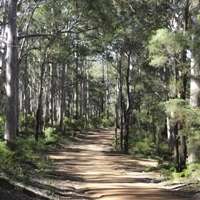Plant more native tress to increase rainfall in South West

Water research experts have called for urgent reforestation to mitigate climate change caused by the widespread land clearing which occurred in Western Australia up until the 1980s.
Researchers from the Centre for Water Research at The University of Western Australia analysed rainfall and land clearing data and found that extensive deforestation was a major cause of the rainfall decline experienced in the State's South West.
UWA Honorary Research Fellow Mark Andrich said land clearing of the forested coastal strip region south of Perth, which removed 50 per cent of the native forests between 1960 and 1980, coincided with a 16 per cent reduction in rainfall relative to stationary coastal rainfall.
He said the research, published in the International Journal of Sustainable Development and World Ecology, also highlighted the economic impact on low-income farmers from the resulting reduction in agricultural production.
"The economic consequences associated with this change of land use on the availability of fresh water resources have been underestimated to date and disproportionately affect the environment and poorest members of the population," Dr Andrich said.
Centre for Water Research director and co-author Professor Jörg Imberger said to understand the future of water resource availability in WA, it was important to account for the effect of land use on local climate, and rainfall in particular.
The researchers analysed existing rainfall and land clearing data which showed that winter rainfall along the coast was stationary, while rainfall declined inland during periods of extensive logging.
Dr Andrich said the research conclusively showed that the clearing of South West forests between 1960 and 1980 had caused a direct reduction in rainfall of around 15 per cent at Mundaring Weir - an important source of drinking water for West Australians. It also showed a decline in Wheatbelt winter rainfall relative to rainfall on the coast also started around 1960.
"For example rainfall at Wilgarrup declined by 28 per cent between 1960 and 1970, relative to stationary coastal rainfall," he said. "Over the same period the rainfall ratio for Duranillin in the central Wheatbelt, compared to Cape Naturaliste at the coast, declined by 13 per cent.
"The research suggests there is an urgent need to increase rainfall and mitigate changes in climate via reforestation programs using large native trees," Dr Andrich said. "This would involve growing tall native trees including Jarrah and Karri on vacant coastal land, as well as strategically growing native trees in and around farms."
Professor Imberger stressed the importance of the findings and urged decision-makers to stop blaming everything on climate change.
"Rather, they need to focus on what we can do locally to make our State water self-sufficient, carbon neutral and one where our agricultural community and our biodiversity receive the same recognition as the city dwellers in Perth," he said.
More information: Mark A. Andricha* & Jörg Imbergera The effect of land clearing on rainfall and fresh water resources in Western Australia: a multi-functional sustainability analysis International Journal of Sustainable Development & World Ecology. DOI: 10.1080/13504509.2013.850752
Provided by University of Western Australia



















